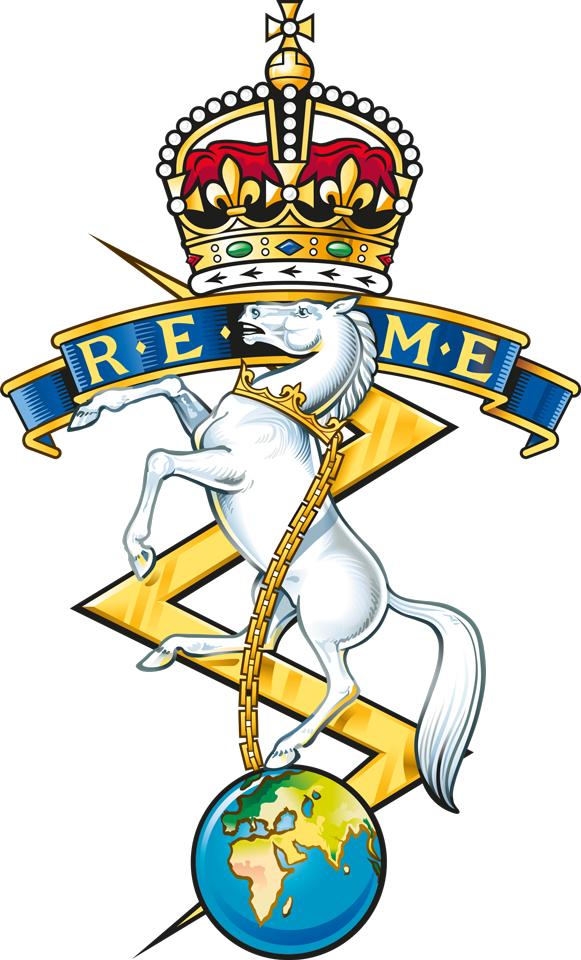History
History
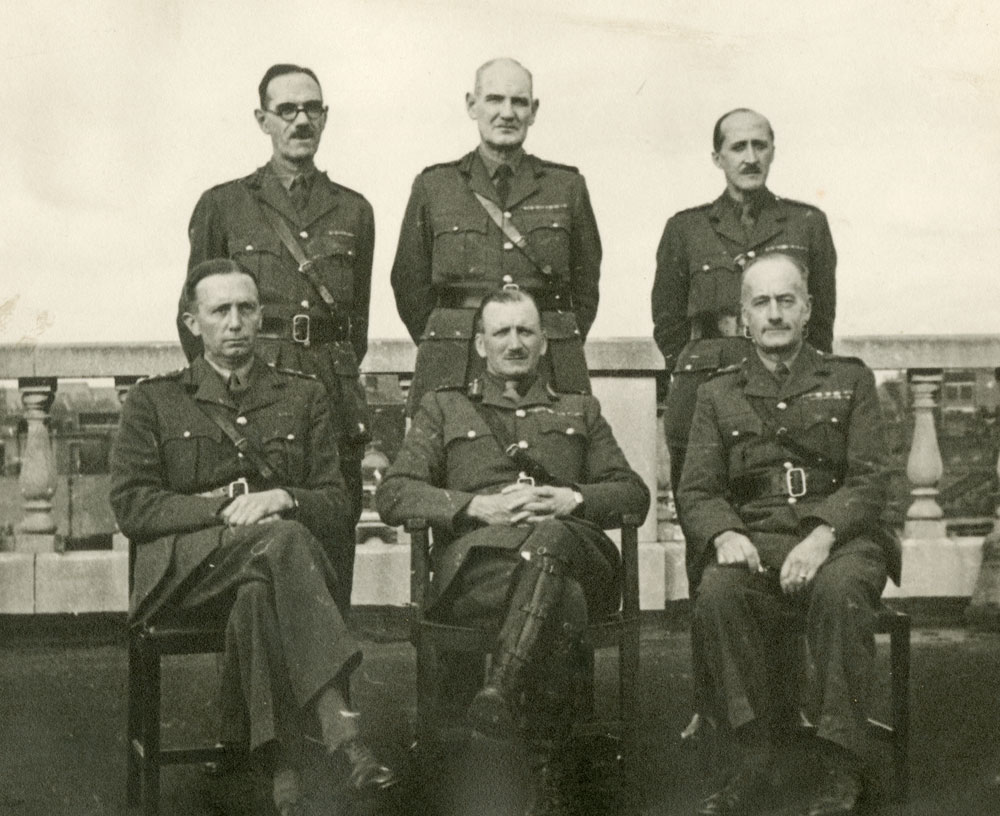
Early Days of the Corps
The photograph depicts REME senior Officers at the War Office about 18 months after formation of the Corps.
Back row: (Left to right) Brigadiers D C McPherson DDME(O), J Storar DDME(P), H R Howard DDME(W).
Front row: (Left to right) Brigadier E R Caffyn DME 21st Army Group, Major General E B Rowcroft DME, Brigadier F R Bloor DDME(T).
Historical Background
In the days of bow and arrow, pike, sword and battle-axe it was reasonable enough to expect every soldier to be responsible for the upkeep of his own arms and equipment. In fact the Assize of Arms in 1181, which appears to have been the first attempt to legislate for the good condition of Army equipment not only enforced this individual responsibility but also forbade a soldier to sell or pawn his arms and enjoined him to bequeath them to his heirs.
With the invention of gunpowder came more complicated weapons and the problem of ammunition supply. At the same time ordnance and other “engines of war” increased in size and quantity and the need for a separate authority to provide and maintain them became pressing. This requirement was met by employing civilian tradesmen and by establishing government arsenals and powder factories. Eventually the civilian artificers and armourers became military tradesmen and were combined with the providers of military stores in 1896 into the Army Ordnance Corps.
The Industrial Revolution of the 19th century affected the army and by World War I (1914-1918) it had culminated in an identifiably modern force with machine guns, aircraft, motor vehicles, tanks, optical range finders and radios. Responsibility for the maintenance and repair of the varied new equipment was at first accepted, rather naturally, by the arms and services that used them most and a number of separate repair organisations began to grow up side by side. As a result, by the end of World War I the Tank Corps had its own workshops, the Royal Engineers (RE) repaired most of their own specialist equipment, and the Army Service Corps (ASC) had become generally responsible for the repair of mechanical transport. It was the responsibility of the Army Ordnance Corps (AOC) to repair most other equipment’s, including small arms, guns and instruments. At this time, many of these Corps gained their ‘Royal’ prefix. There were thus four different repair organisations functioning simultaneously in the Army with many other regiments and Corps having some of their own tradesmen to carry out minor repairs. Not only was this arrangement most uneconomical in manpower and plant, but it also created administrative difficulties for the unfortunate units that had to deal with two or more authorities in order to get all of their equipment repaired.
Many efforts were made between the two World Wars to introduce a centralised and more efficient repair organisation that could deal with all technical equipment. Unfortunately most of these attempts failed either on the grounds of initial expense or because of esprit-de-corps and a strong reluctance on the part of the various arms and services to accept any change that might conceivably weaken their self-reliance. A first major step in the right direction was approved in 1926 when the Engineering Branch of the Royal Army Ordnance Corps (RAOC(E)) was given responsibility for the repair of armoured fighting vehicles and of some of the Army’s mechanical transport. However, the Royal Engineers, Royal Signals and Royal Army Service Corps (RASC) were still allowed to retain their separate organisations for repairing most of their vehicles and specialist technical equipment. For the Royal Engineers this mostly applied to civil engineering plant and machinery; for the Royal Signals, radio, telegraph and telephone equipment and for the Royal Army Service Corps (the predecessors of the Royal Corps of Transport (RCT) which then amalgamated with the RAOC into the Royal Logistic Corps (RLC)), all forms of motor transport. The Royal Tank Corps and many other units still provided their own unit tradesmen for immediate repair tasks.
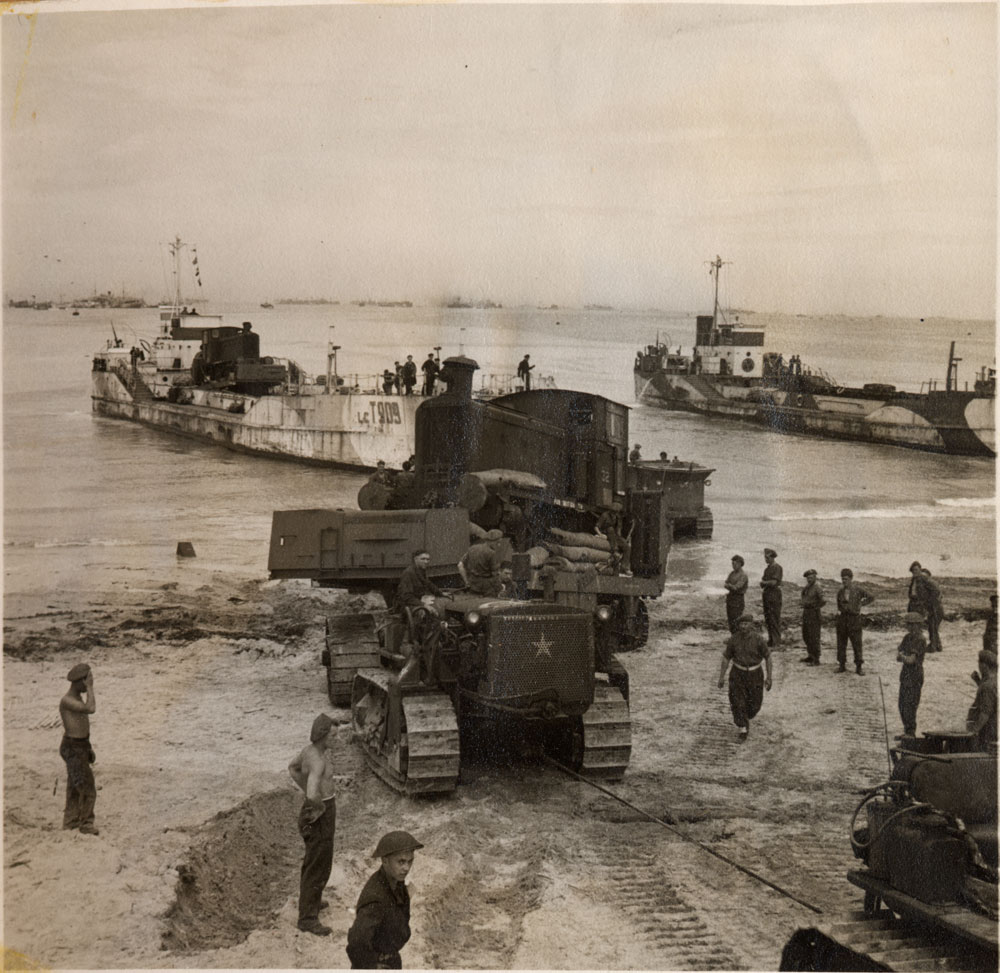
Operation Overlord, the Invasion of France 6 June 1944.
The photograph depicts Boulton-Paul tracked tank transporter trailer being pulled by a D-8 on the beaches in Normandy. The photograph depicts REME senior Officers at the War Office about 18 months after formation of the Corps.
Back row: (Left to right) Brigadiers D C McPherson DDME(O), J Storar DDME(P), H R Howard DDME(W).
Front row: (Left to right) Brigadier E R Caffyn DME 21st Army Group, Major General E B Rowcroft DME, Brigadier F R Bloor DDME(T).
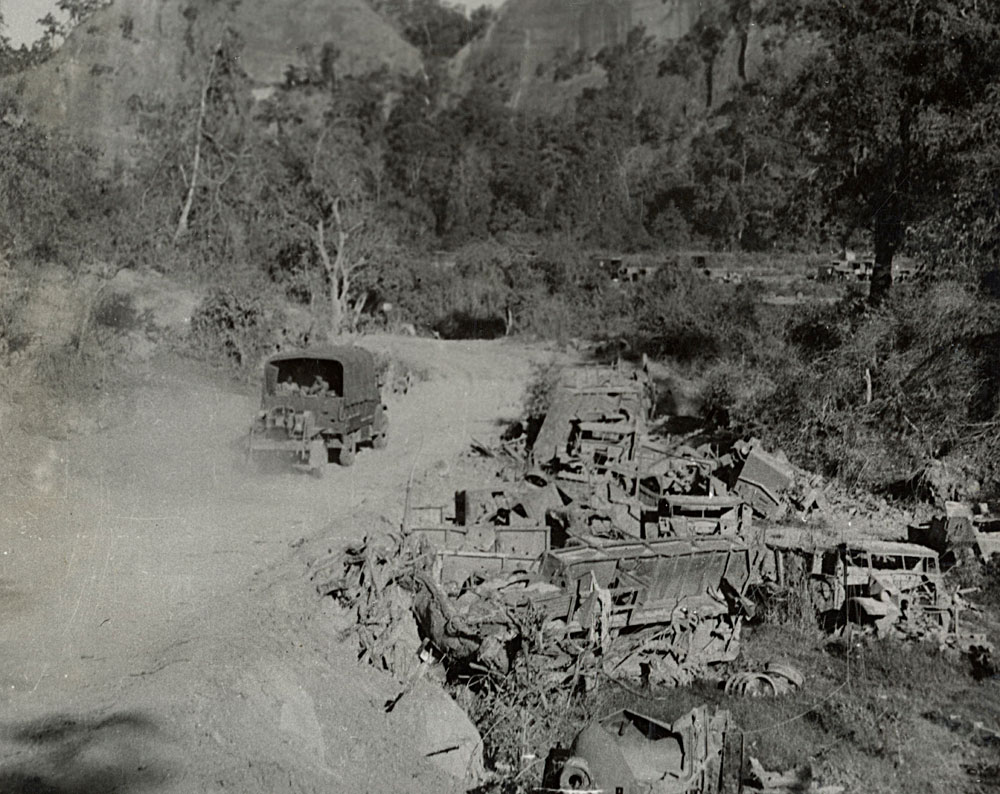
War against Japan.
The photograph depicts the dump of British vehicles at Shwegyin, Burma abandoned to Japanese in 1942 and recaptured in December 1944.
The Formation of REME
Rearmament and the mechanisation of the Army followed by the outbreak of the Second World War led to further considerable increases in the quantity and complexity of technical equipment. The consequent heavy repair load revealed the weakness of the existing organisation, while the shortage of qualified tradesmen in the Services soon dictated a need for a system that would use the available men more effectively.
In 1941, a Cabinet committee, under the chairmanship of Sir William Beveridge, was set up to investigate the use of manpower in the three services. As a result of one of its recommendations – that the repair services in the army should be rationalised – the Corps of Royal Electrical and Mechanical Engineers (REME) came into being on the first of October 1942.
The Corps had the rare distinction of being honoured with the designation “Royal” from the day of its formation.
Such a major re-organisation was too complex, however, to be carried out quickly and completely in the middle of a world war. It was decided therefore that the changeover should be undertaken in two phases.
Phase I
In Phase I, which was implemented immediately, REME was formed on the existing framework of the RAOC (E), strengthened by the transfer of certain technical units and tradesmen from the RE and RASC. At the same time, a number of individual tradesmen were transferred into REME from other Corps. The new Corps was made responsible for repairing the technical equipment of all arms with certain major exceptions. REME did not yet undertake:
These repairs which were carried out by unit tradesmen who were driver/mechanics or fitters in regiments and belonged to the unit rather than being attached to it.
Repairs of RASC-operated vehicles, which remained the responsibility of the RASC; thus each RASC Transport Company had its own workshop. Repairs of RE specialist equipment, which remained the responsibility of the RE.
In 1942 the Mechanical Engineering Directorate at the War Office was established under the Director of Mechanical Engineering (DME), Major-General E B Rowcroft (later Sir Bertram Rowcroft). A plan for the subsequent development of the Corps was drawn up in three stages of nine months each and in almost every detail planned target dates were achieved. In India the Indian EME (IEME) was formed, which was separate from REME since, at this time, the Indian Army was a separate organisation although many officers and technical personnel were British. Also, HQ REME Training Establishment was formed at Arborfield, Berkshire to control REME technical training. Importantly, the repair system in the field was reorganised so that repair could be carried out as far forward as possible and the take-over from RAOC of responsibility for scaling of spares was completed. DMEs and deputies were appointed to all major headquarters of the field army and deputy directors were appointed to all static command headquarters. Commanders REME (CREME) were appointed to divisions and Brigade Electrical and Mechanical Engineers (BEME) to brigades.
Almost at once the new organisation was tried out and proved successful at the 2nd Battle of Alamein; the first major operation after the Corps was formed. The re-organised recovery and repair system was thoroughly tested during the remainder of the war, during which REME grew to be the largest technical corps, extending its activities to include the manufacture of spare parts and special equipment on a large scale. In addition to its uniformed tradesmen, the Corps employed thousands of civilian tradesmen of many different nationalities in its static workshops throughout the world.
REME reached its maximum strength in May 1945, approximately 8000 officers and 152,000 other ranks. The IEME, East and West African EMEs, Royal Canadian, Australian, New Zealand EMEs, and the South African Technical Service Corps (TSC) totalled another 185,000. Some 130,000 civilians were employed in EME Services in all parts of the world.
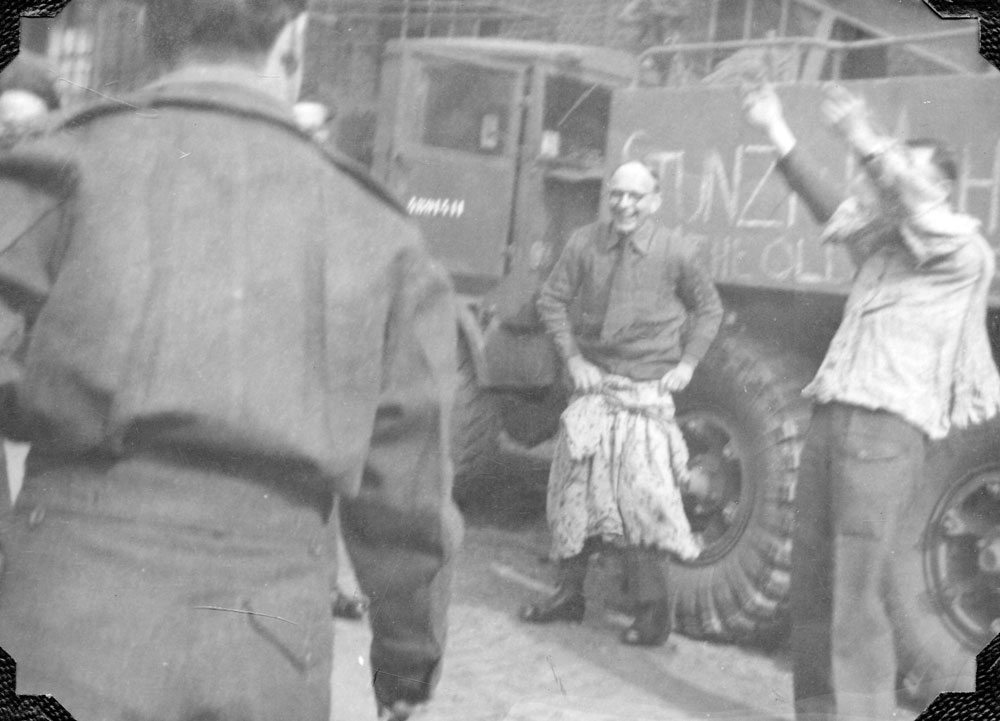
Victory in Europe
The photograph depicts REME soldiers delighted at the end of the war in Europe Germany 1945.
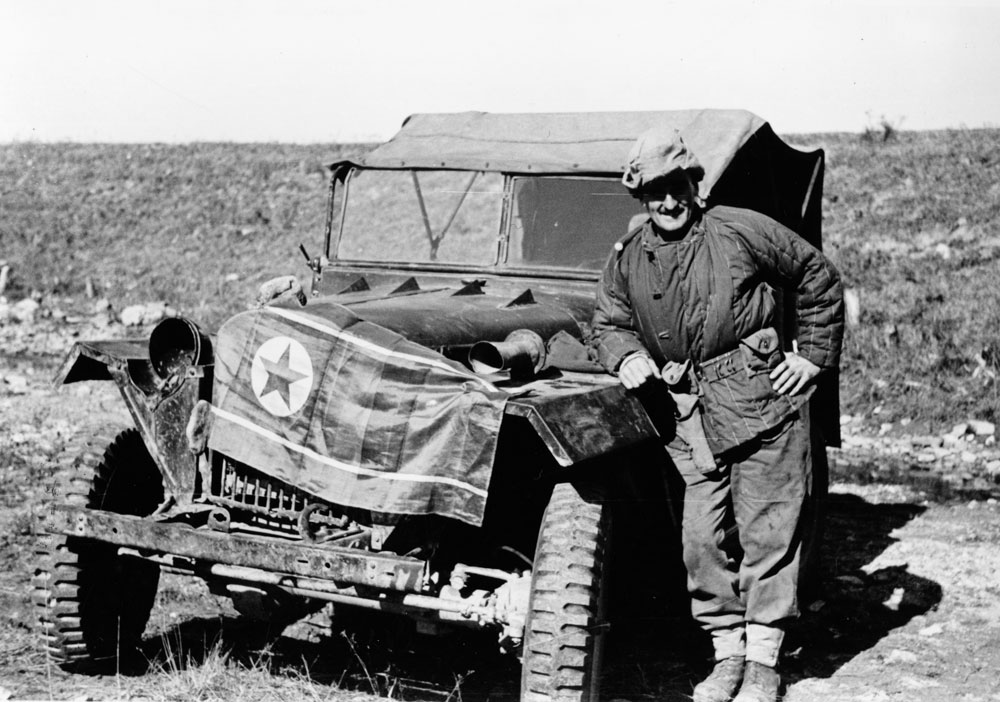
Korea (25 June 1950 – 27 July 1953)
1st Battalion Argyle & Sutherland Highlanders LAD. SSgt Jack Coady , “Shotgun” to Corporal Charles Bogart. The Russian Jeep captured in North Korea. Taken after Cpl Bogart had repaired the bullet holed radiator and taught Jack to drive in one hour only.

Malaya 1948 - 1960.
Exercise “Rovergang” Training for young REME officers in recovery at Kuanton – East coast of Malaya to Singapore 1959.
Phase II REME
In Phase II, which was postponed until conditions were more suitable for a further major change, it was agreed that REME should take over all unit repairs and, in the case of the RASC, field repair as well.
In 1949 the Army Council approved the second phase of the Corps development and REME assumed the responsibilities of unit tradesmen of most arms. At the same time, REME took over the RASC field repair workshops. This took place in 1950/51.
Since World War II, REME has continued to take its part in all activities of the Army. The Corps has won an established place as technical advisers to the General Staff on the design of new Army equipment.
Support to Army Aviation
In 1958 REME accepted full responsibility for first and second line servicing of all Army Air Corps light aircraft.
Radio and Royal Engineers equipment
By 1966 REME agreed the share of first line support for Royal Engineers owned equipment and the responsibility for the first line repair of all non Royal Signals operated radio equipment. The Director had now become Director Electrical and Mechanical Engineering (Army) (DEME(A))
Logistic Executive (Army) (LE(A))
In 1977 the Logistic Executive (Army) was formed. At this time DEME(A) became Director General Electrical and Mechanical Engineering (DGEME) with responsibility for repair of army equipment whilst Director General Ordnance Services (DGOS) was responsible for provision of the spares required to carry out the repair. Each DG also had responsibility for management of their respective Corps’ recruitment, training, manning, equipment and regimental business.
Combat Service Support
At the end of the Cold War, a Logistic Support Review (LSR) was carried out to examine the Army’s logistic support organisation. On 6 April 1992 logistic support was grouped into two functions reporting to The Quartermaster General (QMG);
- Service Support (SS) consisting primarily of functions directly sustaining forces at combat readiness in combat.
- Equipment Support (ES) providing support for equipment, concerned with the maintenance and availability of equipment.
At this point, the DGEME became the Director General Equipment Support (Army) (DGES(A)). At the same time, the Royal Corps of Transport (RCT), Royal Army Ordnance Corps (RAOC), Royal Pioneer Corps (RPC) and Army Catering Corps (ACC) merged into the Royal Logistic Corps (RLC). DGES(A) still had responsibility for all Corps regimental matters as “Head of the Corps of REME”
DEME(A) Again
In 1997 the Strategic Defence review contained a simple statement to the effect that logistics were to be reorganised on a tri-Service basis. At that time the management of the Corps of REME was disconnected from the management of ES and a Director, independent of ES, assumed responsibility for running the Corps and would regain the title DEME(A).
Army 2020
In 2010, the Strategic Defence and Security Review was published to define the structure of the Armed Forces after the end of the Afghanistan conflict and withdrawal from Germany. The Army part of the plan was called Army 2020. Refinements to the plan after the 2015 Strategic Defence and Security Review became known as “Army 2020 Refine”. In 2012, as part of Army 2020, most of the role of DEME(A) was shared by Army Headquarters and the Capability Directorate Combat Service Support. The Regimental Colonel, with a revised title of Colonel REME, took on the remaining responsibilities. At the same time, Royal Assent was given to the introduction of the appointment of Master General REME (MGREME) who as the “Head of Corps” has the responsibility for overseeing Corps matters and representing Corps matters at the highest levels in the army.
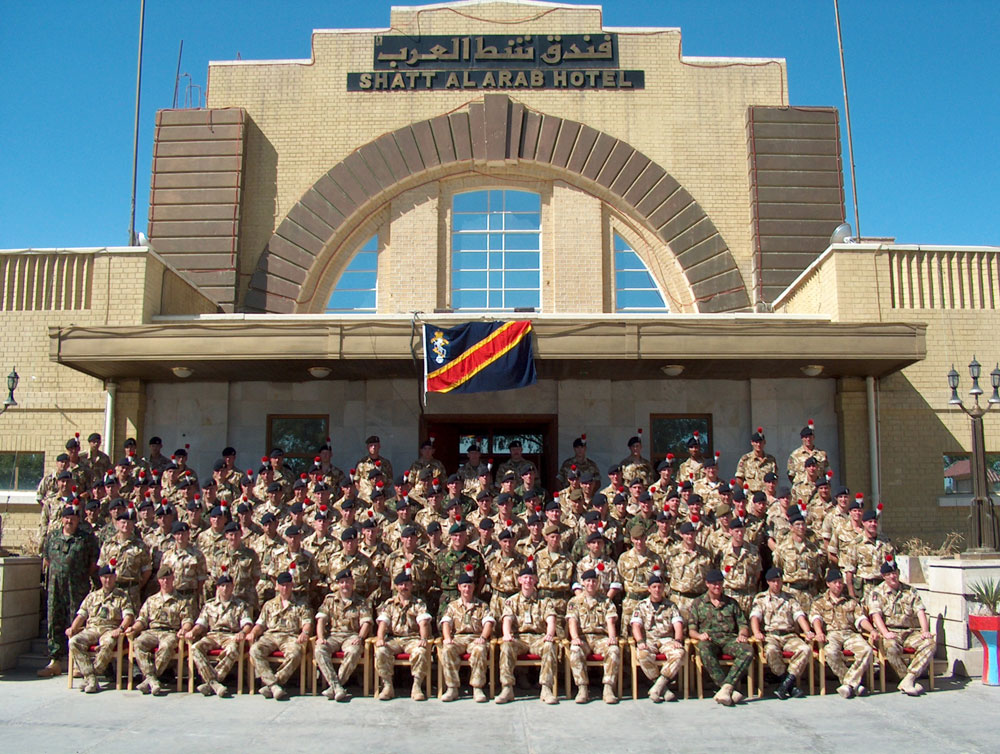
1 Battalion REME in Iraq, in Basrah
On operations in OP Telic 2003 – 2004 2nd Gulf War – Iraq with the Royal Fusiliers
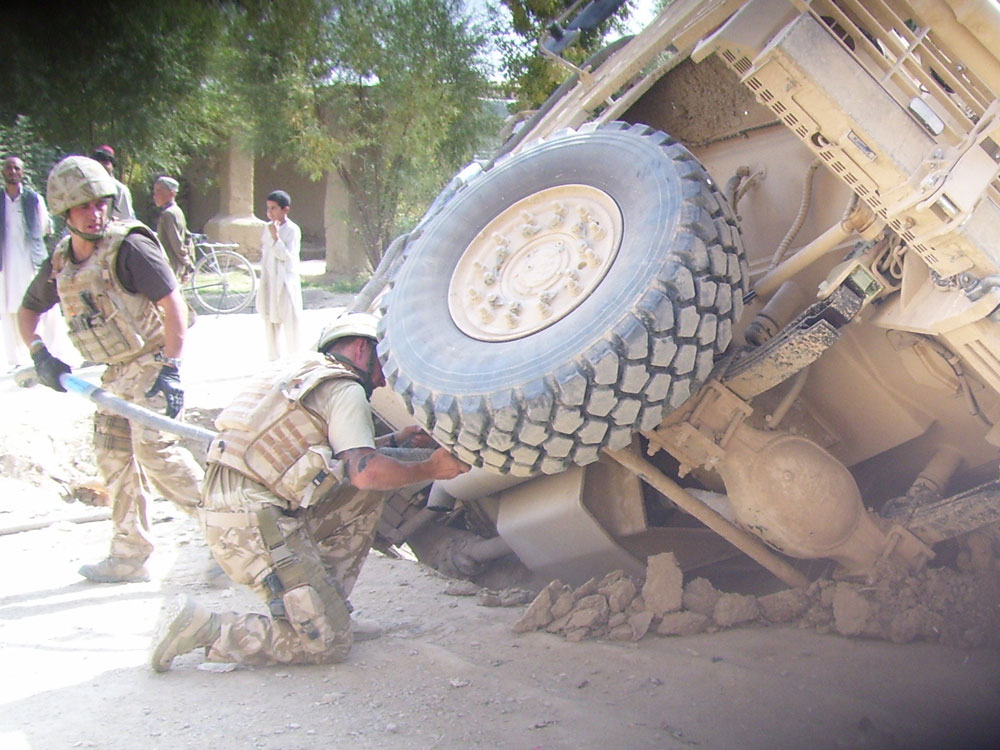
Op Herrick 11 2009. Afghanistan
Defence Training Review
The Defence Training Review (DTR) was established by the then Defence Secretary, Lord Robertson on the 22nd July 1999 to examine all individual training and education in the British Armed Forces. The Review report entitled ‘Modernising Defence Training’ was published in 2001, it highlighted;
- Future Defence Training needed to be more integrated;
- Training needed to be managed on a Defence wide basis;
- The training estate needed investment and rationalisation to ensure that facilities were used efficiently and were fit for purpose.
By 2008, after significant changes to the initial plan the preferred site was chosen as RAF St Athan in South Wales, a custom Defence Technical Academy was to be built onsite as well as the Home of the Corps. By 2010 and a change in government the plan was suspended and REME Training would remain in its split location of Arborfield and Bordon.
In 2012 The Defence Technical Training Change Programme (DTTCP) stood up, with much the same aims as the DTR, but on a smaller scale. RAF Lyneham was chosen as the preferred site after it had been marked for closure in the Defence and Security Review 2010. The movement of REME Training from Arborfield and Bordon would form Tranche 1 of the programme with the RAF following in Tranche 2 and Navy in Tranche 3.
The move of REME Training under Tranche 1 came with £121m of firm funding to set up modern facilities to deliver modern training. Tranche 1 started late 2013 with Staff Officers leading the way for the Home of Corps, DSEME, REME Arms School and SAAE elements of the move.
The move was delivered by Project ROWCROFT, headed up by Colonel Ian Gibson, former Colonel REME and a former Trustee of The REME Charity.
Arborfield and Bordon would cease training in September 2015, pack, move location and start Initial Operating Capacity (IOC) in November – six weeks was the absolute maximum training could be interrupted to lessen the impact on the Field Force.
Full Operating Capability was achieved in January 2016, on target – we are still settling into our New Home in Lyneham, and despite the initial protest of leaving Arborfield and Bordon the benefits are not difficult to see. Training is operated much more efficiently under one school and one location, and the facilities for the new recruits are far superior.
Arte et Marte

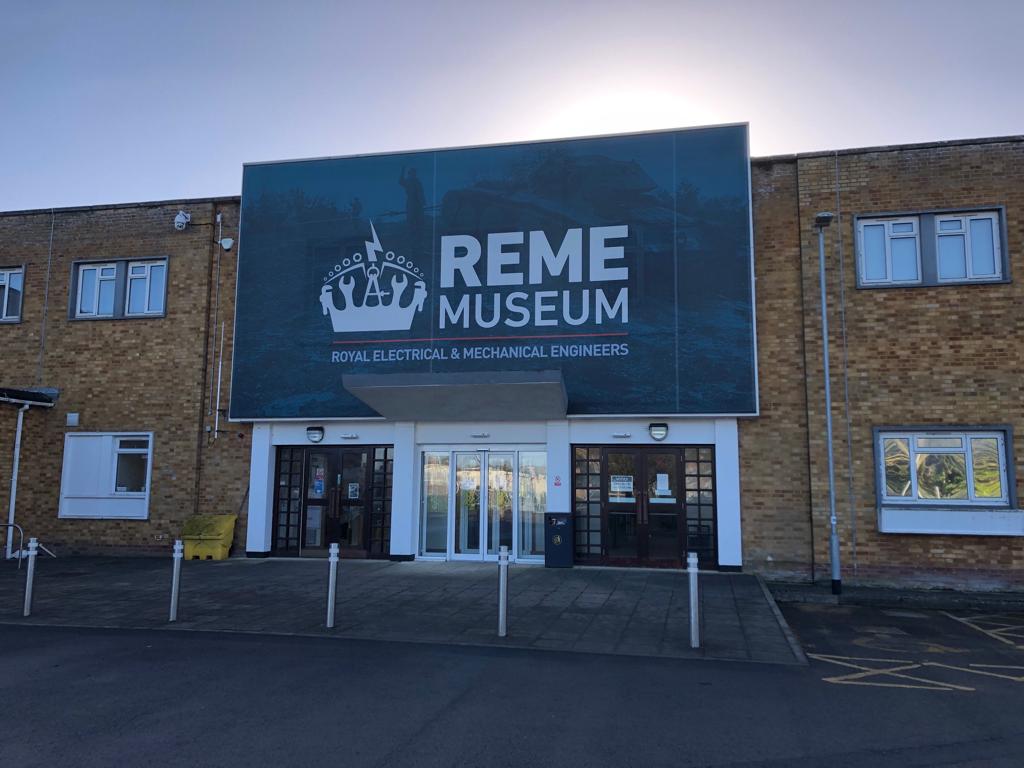
REME Museum
If you want to learn more about the history of the REME, you can visit The REME Museum – via the button below.
